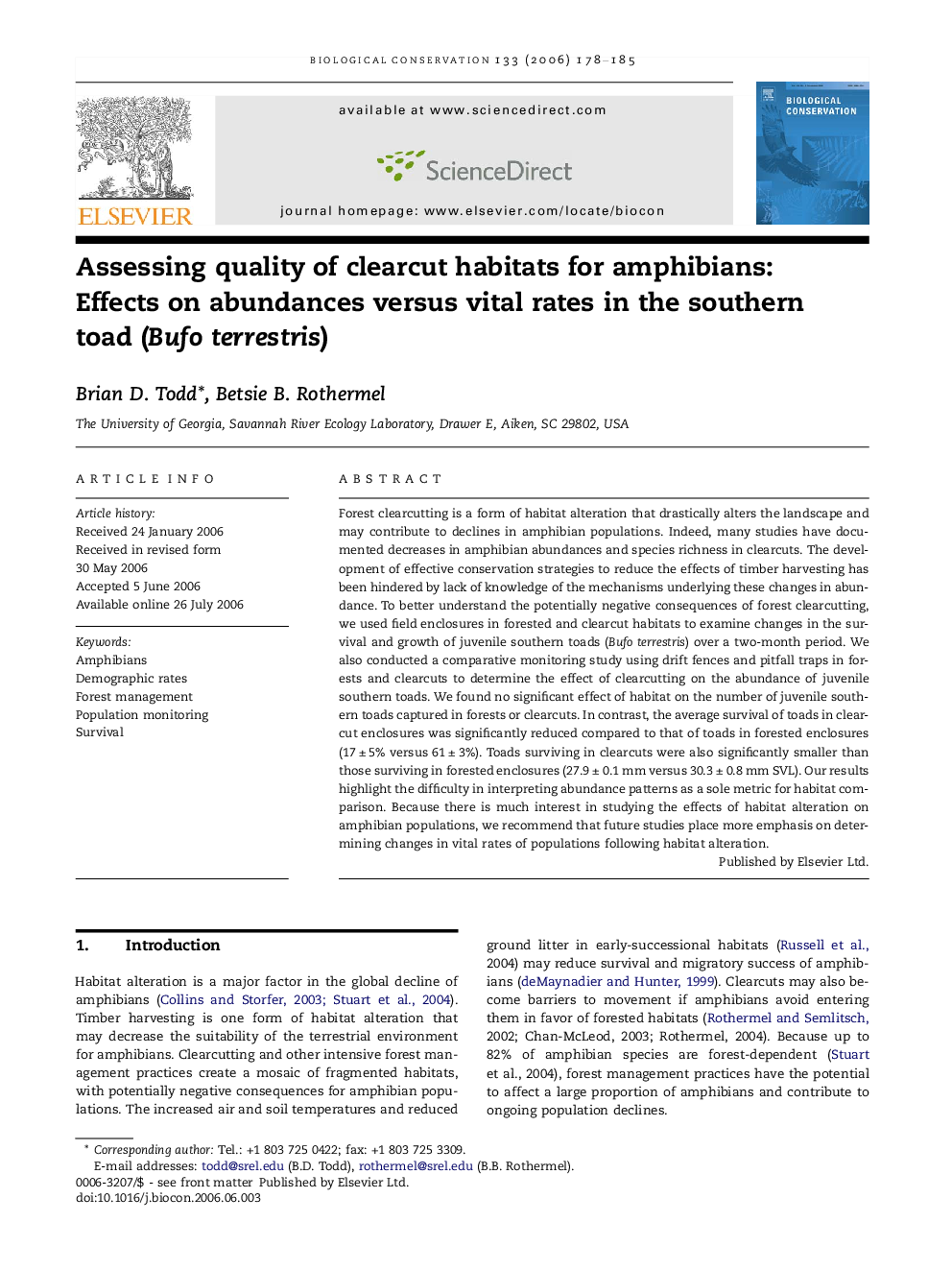| Article ID | Journal | Published Year | Pages | File Type |
|---|---|---|---|---|
| 4387600 | Biological Conservation | 2006 | 8 Pages |
Forest clearcutting is a form of habitat alteration that drastically alters the landscape and may contribute to declines in amphibian populations. Indeed, many studies have documented decreases in amphibian abundances and species richness in clearcuts. The development of effective conservation strategies to reduce the effects of timber harvesting has been hindered by lack of knowledge of the mechanisms underlying these changes in abundance. To better understand the potentially negative consequences of forest clearcutting, we used field enclosures in forested and clearcut habitats to examine changes in the survival and growth of juvenile southern toads (Bufo terrestris) over a two-month period. We also conducted a comparative monitoring study using drift fences and pitfall traps in forests and clearcuts to determine the effect of clearcutting on the abundance of juvenile southern toads. We found no significant effect of habitat on the number of juvenile southern toads captured in forests or clearcuts. In contrast, the average survival of toads in clearcut enclosures was significantly reduced compared to that of toads in forested enclosures (17 ± 5% versus 61 ± 3%). Toads surviving in clearcuts were also significantly smaller than those surviving in forested enclosures (27.9 ± 0.1 mm versus 30.3 ± 0.8 mm SVL). Our results highlight the difficulty in interpreting abundance patterns as a sole metric for habitat comparison. Because there is much interest in studying the effects of habitat alteration on amphibian populations, we recommend that future studies place more emphasis on determining changes in vital rates of populations following habitat alteration.
